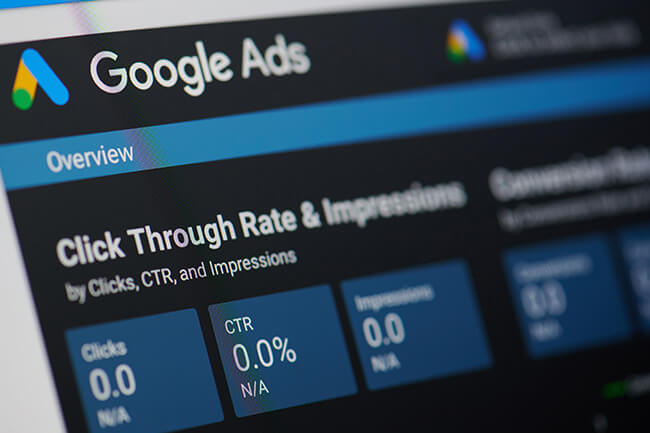Ad campaigns are a set of ads focused on one message to achieve specific business goals like brand awareness, sales, or lead generation. They’re not just about eye-catching ads; they need research, organization, and clear planning. Start by defining goals, researching keywords for your audience, and creating content to raise interest in your products or services.
Here are some interesting advertising stats:
- Social media ad budgets are set to grow by 11.76% annually by 2026.
- 77% of Twitter users like brands that respond to their tweets, but it takes businesses about 10 hours to respond, while customers expect a response within four hours.
- Small businesses using Google Ads typically spend $9,000 to $10,000 per month on advertising.
- 76% of marketers don’t use behavioral data for online ad targeting.
- 70%-80% of users ignore sponsored search results.
- 84% of people expect brands to create content.
Why Measuring Ad Campaign Success is Crucial?
Measuring ad campaign success is super important because it helps businesses know if their advertising efforts are working or not, and any online advertising agency worth their salt knows it.. Here are a few simple reasons why it’s crucial:
- Know What’s Working: It tells you which ads are bringing in customers and which ones aren’t, so you can focus on what works.
- Save Money: You can stop spending money on ads that don’t work, saving your business cash.
- Improve Strategies: By tracking success, you can learn what strategies are effective and make your ads even better.
- Meet Goals: It helps you see if you’re reaching your goals, like getting more sales or brand recognition.
- Stay Competitive: It allows you to stay ahead of the competition by adapting your ads based on what’s successful.
- Prove ROI: You can show your boss or investors that the money spent on ads is bringing in more money for the business.
Understanding Ad Campaign Objectives
Here are a few things you need to know when it comes to understanding your campaign objectives:
- Know Your Goal: Decide what you want to achieve with your ads, whether it’s boosting sales, building brand awareness, or gathering leads.
- Specific Targets: Be clear about who your ads are meant for – your target audience. Understand their needs and preferences.
- Plan and Budget: Create a budget and a plan that aligns with your goal. Different objectives may require different spending levels.
- Measurable Results: Choose metrics to track your success. For example, if it’s sales, you’ll measure revenue; if it’s brand awareness, you might look at website traffic.
- Ad Content Matters: Craft your ad content to align with your objective. A sales-focused ad will look different from one meant to raise awareness.
- Testing and Optimization: Continuously monitor your ads’ performance and adjust them if needed. This ensures you’re moving towards your goal efficiently.
- Consistency: Stick to your objective throughout the campaign. Avoid changing goals frequently.
- Learn and Adapt: Don’t be afraid to learn from your results. If something isn’t working, adapt your strategy accordingly.
- Timeline: Set a clear start and end date for your campaign. This helps in assessing its impact.
- Audience Feedback: Listen to what your audience says about your ads. Their feedback can provide valuable insights for future campaigns.
Key Metrics for Evaluating Ad Campaign Performance
Key metrics for evaluating ad campaign performance are like measuring sticks that help you see how well your ads are doing. These measurements tell you if your ads are working or not.
Here are some simple key metrics to consider:
- Click-Through Rate (CTR): This tells you how many people clicked on your ad compared to how many saw it. A higher CTR is usually better because it means more people are interested in your ad.
- Conversion Rate: This shows how many people who clicked on your ad actually did what you wanted them to do, like buying a product or signing up for a newsletter. A higher conversion rate means your ad is effective.
- Return on Investment (ROI): This metric helps you understand if you’re making more money from the ad than you spent on it. A positive ROI is good; it means your ad is making you money.
- Cost per Click (CPC): This is how much you pay each time someone clicks on your ad. Lower CPC is better because it means you’re spending less to get people to your website.
- Ad Position: This tells you where your ad shows up on a page. Usually, higher positions are better because more people see your ad.
- Impressions: This is how many times your ad is shown. More impressions can be good for brand awareness, but you also want to make sure people are taking action (clicking, converting).
How To Measure The Success Of Your Marketing Campaign
Measuring the success of your marketing campaign means figuring out if it’s working well.
Here’s a simple way to do it:
- Set Clear Goals: First, decide what you want your campaign to achieve. Do you want more people to visit your website, buy your product, or sign up for your newsletter? Having clear goals helps.
- Track Your Results: Use tools like website analytics, sales records, or social media insights to see what’s happening. Look at numbers like website visits, sales, or email sign-ups.
- Compare Before and After: Compare the numbers from before your campaign started to the numbers during and after the campaign. Are they better? That’s a good sign!
- Check Your Costs: Make sure you’re not spending more money on the campaign than you’re making from it. If you’re spending a lot but not getting good results, you might need to change your approach.
- Ask Your Customers: Sometimes, it’s good to just ask your customers if they saw your campaign and if it influenced their decision. You can do this through surveys or simply by talking to them.
- Learn and Improve: If your campaign isn’t as successful as you hoped, don’t worry. Use what you’ve learned to make your next campaign even better.
Interpreting Results and Making Informed Decisions
Interpreting results and making informed decisions means understanding the information you have and using it to make smart choices.
Imagine you’re cooking and you taste the food to see if it’s ready. Interpreting results is like figuring out if it’s cooked well or needs more time. In real life, it’s about looking at data or information and deciding what it means.
Once you understand the data, you can use it to make good decisions. For instance, if the food needs more time, you decide to keep cooking. In business or other areas, it might mean changing your strategy if the data shows that what you’re doing isn’t working.
So, interpreting results is like tasting the food, and making informed decisions is like deciding what to do next based on how it tastes. It’s all about using information wisely to reach your goals.
Case Studies: Real-World Examples
Successful ad campaigns often rely on metrics like sales, brand awareness, and social engagement. Lessons from both successful and failed campaigns highlight the importance of authenticity, sensitivity, and careful planning when designing advertising strategies. Marketers can learn valuable insights from these real-world examples to create effective and impactful campaigns.
Successful Ad Campaigns and Their Metrics
1. Apple’s “Get a Mac” Campaign:
This iconic ad campaign featured a series of commercials comparing Mac and PC users. It achieved remarkable success in brand awareness and sales. Apple reported a significant increase in Mac sales during the campaign’s run. The ads were widely talked about and received critical acclaim, earning industry awards.
2. Dove’s “Real Beauty” Campaign:
Dove’s “Real Beauty” campaign aimed to challenge conventional beauty standards. It generated massive buzz and engagement on social media. The campaign’s YouTube videos garnered millions of views, and its hashtag #RealBeauty became a viral sensation. Dove saw an increase in sales of its products and strengthened its brand image.
3. Old Spice’s “The Man Your Man Could Smell Like” Campaign:
This humorous campaign became a sensation on social media, with millions of views on YouTube and shares across various platforms. Old Spice reported a significant sales increase following the campaign. The campaign’s success was measured not only in sales but also in the brand’s revitalized image among younger consumers.
Lessons Learned from Campaigns’ Successes and Failures
1. Pepsi’s Kendall Jenner Ad:
This campaign received immense backlash for attempting to tackle social issues insensitively. It taught marketers the importance of understanding the context and sensitivity around social and political issues. It’s crucial to approach such topics with authenticity and a genuine commitment to change.
2. New Coke:
The New Coke campaign in the 1980s is often cited as one of the biggest marketing failures. It taught marketers not to tamper too drastically with a beloved product. The lesson here is that consumers have strong emotional connections to brands, and any major changes should be approached with caution.
3. Red Bull’s Stratos Jump:
Red Bull’s sponsorship of Felix Baumgartner’s stratosphere jump generated immense brand exposure and engagement. The lesson here is that innovative and daring marketing stunts can pay off. However, it’s crucial to ensure safety and thorough planning when attempting such high-risk endeavors.
Key Takeaways
Understanding and measuring the success of your ad campaign is like having a compass on your marketing journey. By tracking the right metrics and learning from both successes and setbacks, you can navigate toward your business goals with confidence.
Remember, it’s not just about numbers; it’s about making informed decisions that drive your brand forward. So, keep this guide as your trusty map, and you’ll find your way to advertising success.
Happy marketing!





Tell us your thoughts in the comments